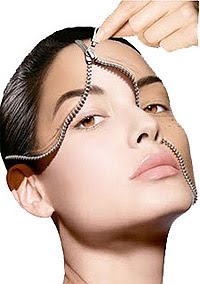The Skin Lightening website brings you another skin-care article...
Melasma is often referred to as "Chloasma faciei" or 'The mask of pregnancy' when it appears in pregnant women, is a tan or dark skin discolouration. Although it can affect anyone, melasma is particularly common in women, especially pregnant women and often appears on women who are taking oral or patch contraceptives or hormone replacement therapy (HRT) medications.
Melasma is often referred to as "Chloasma faciei" or 'The mask of pregnancy' when it appears in pregnant women, is a tan or dark skin discolouration. Although it can affect anyone, melasma is particularly common in women, especially pregnant women and often appears on women who are taking oral or patch contraceptives or hormone replacement therapy (HRT) medications.
 It is prevalent in both men and women of Native American descent (it usually appears on the forearms) and in men and women of German/Russian and Jewish descent (where it presents on the face).The symptoms of melasma are dark, irregular patches commonly found on the upper cheek, nose, lips, upper lip and forehead. These patches often develop gradually over time. Melasma does not cause any other symptoms beyond the cosmetic discolouration.
It is prevalent in both men and women of Native American descent (it usually appears on the forearms) and in men and women of German/Russian and Jewish descent (where it presents on the face).The symptoms of melasma are dark, irregular patches commonly found on the upper cheek, nose, lips, upper lip and forehead. These patches often develop gradually over time. Melasma does not cause any other symptoms beyond the cosmetic discolouration.Melasma is thought to be the stimulation of melanocytes or pigment-producing cells by the female sex hormones estrogen and progesterone to produce more melanin pigments when the skin is exposed to sun. Women with a light brown skin type who are living in regions with intense sun exposure are particularly susceptible to developing this condition.
The discoloration usually disappears spontaneously over a period of several months after giving birth or stopping the oral contraceptives or hormone replacement therapy.
Treatments to hasten the fading of the discolored patches include:
Topical depigmenting agents, such as hydroquinone (HQ) either in over-the-counter (2%) or prescription (4%) strength. HQ is a chemical that inhibits tyrosinase, an enzyme involved in the production of melanin.
Tretinoin, an acid that increases skin cell (keratinocyte) turnover. This treatment cannot be used during pregnancy.
Facial peel with alpha hydroxyacids or chemical peels with glycolic acid.
 Laser treatment. A Wood's lamp test should be used to determine whether the melasma is epidermal or dermal. If the melasma is dermal, Fraxel laser has been shown in studies to provide improvement in many patients. However, intense pulsed light will actually darken the spots. Dermal melasma is generally unresponsive to most treatments, and has only been found to lighten with products containing mandelic acid (such as Triluma cream) or Fraxel laser.
Laser treatment. A Wood's lamp test should be used to determine whether the melasma is epidermal or dermal. If the melasma is dermal, Fraxel laser has been shown in studies to provide improvement in many patients. However, intense pulsed light will actually darken the spots. Dermal melasma is generally unresponsive to most treatments, and has only been found to lighten with products containing mandelic acid (such as Triluma cream) or Fraxel laser. In all of these treatments the effects are gradual and a strict avoidance of sunlight is required. The use of broad-spectrum sunscreens with physical blockers, such as titanium dioxide and zinc dioxide is preferred over that with only chemical blockers. This is because UV-A, UV-B and visible lights are all capable of stimulating pigment production.










